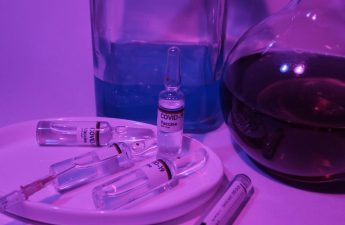Gallstones form when bile hardens into small, solid particles, often causing pain, especially after eating fatty foods․ Diet plays a key role in managing symptoms and reducing risks․ A low-fat, balanced diet rich in fruits, vegetables, and whole grains can help alleviate discomfort and prevent further issues․ Avoiding high-fat and fried foods is crucial, as they can trigger gallbladder attacks․ Understanding the connection between diet and gallstones empowers individuals to make informed choices for better digestive health․
What Are Gallstones?
Gallstones are small, solid particles that form inside the gallbladder, a pouch located beneath the liver․ They develop when bile, a digestive fluid produced by the liver, hardens into crystals or stones․ These stones can be as small as a grain of sand or as large as a golf ball․ Gallstones often cause no symptoms, but when they block the bile ducts, they can lead to severe pain in the upper right abdomen, especially after eating fatty or heavy meals․ The pain may radiate to the back or shoulder and is often accompanied by nausea or vomiting․ Gallstones are most commonly made of cholesterol, bile salts, or bilirubin, and their formation is influenced by factors such as diet, obesity, and age․ Understanding gallstones is essential for managing symptoms and preventing complications․
The Role of Diet in Managing Gallstones
Diet plays a crucial role in managing gallstones by reducing symptoms and preventing further complications․ A healthy, balanced diet can help alleviate pain and discomfort associated with gallstones․ Eating a low-fat diet is often recommended, as high-fat foods can trigger gallbladder attacks․ Increasing fiber intake through whole grains, fruits, and vegetables supports digestion and gallbladder health․ Staying hydrated is also essential, as it helps bile flow smoothly and prevents stone formation․ Avoiding high-cholesterol and fried foods can reduce the risk of gallstone-related pain․ A diet rich in starchy carbohydrates, such as bread, rice, and pasta, can also help manage symptoms․ By making informed dietary choices, individuals with gallstones can better control their condition and improve overall well-being․ A tailored diet plan, combined with medical advice, is often the most effective approach to managing gallstones and preventing recurrence․
Key Dietary Recommendations for Gallstones
A low-fat, high-fiber diet rich in fruits, vegetables, and whole grains is essential․ Incorporate lean proteins and avoid high-cholesterol foods to manage symptoms and support gallbladder health effectively․
Foods to Eat: Fruits and Vegetables
Fruits and vegetables are essential for a gallstone-friendly diet․ They are rich in fiber, vitamins, and antioxidants, which support digestion and overall health․ Dark leafy greens like spinach and kale, as well as citrus fruits like oranges and grapefruits, are excellent choices; Berries, such as blueberries and raspberries, provide antioxidants and fiber․ Cruciferous vegetables like broccoli and cauliflower are also beneficial, though they may cause gas in some individuals․ Aim for at least five portions daily, including a variety of colors to ensure a broad range of nutrients․ These foods help regulate cholesterol levels and promote gallbladder function․ Incorporate them raw, steamed, or roasted, and avoid adding excessive fats during preparation․ A diet rich in fruits and vegetables can help alleviate symptoms and reduce the risk of gallstone formation․
Foods to Eat: Whole Grains and Fiber
Whole grains and high-fiber foods are integral to a gallstone-friendly diet․ They help regulate digestion and reduce the risk of gallstone formation․ Incorporate whole grains like oats, quinoa, brown rice, and barley into meals․ Whole-grain bread, cereals, and pasta are also excellent choices․ A high-fiber diet promotes the movement of food through the digestive system, preventing bile from becoming stagnant and forming stones․ Fiber-rich foods also help lower cholesterol levels, which can contribute to gallstone development․ Include legumes, such as lentils and beans, for their fiber and protein content․ Gradually increase fiber intake to avoid digestive discomfort․ Pair whole grains with lean proteins and vegetables for balanced meals․ A diet rich in whole grains and fiber supports overall health and helps manage gallstone symptoms effectively․ Aim for at least 25-30 grams of fiber daily from diverse sources․
Foods to Eat: Lean Protein Sources
Lean protein sources are essential for a gallstone-friendly diet, as they help maintain healthy bile composition and reduce the risk of gallstone formation․ Opt for poultry like chicken or turkey (without skin), fish such as salmon or cod, and plant-based proteins like beans, lentils, or tofu․ These options are low in saturated fat and cholesterol, which can contribute to gallstones․ Eggs can be included in moderation, but egg yolks should be limited due to their cholesterol content․ Low-fat dairy products, such as yogurt or milk, are also good choices․ Incorporate these proteins into meals to balance your diet and support digestion․ Avoid frying proteins; instead, bake, grill, or steam them for healthier preparation․ Plant-based proteins are particularly beneficial as they reduce the overall risk of gallstone development․ Pair lean proteins with vegetables and whole grains for a well-rounded meal․
Foods to Avoid
Fatty and fried foods, processed meats, and high-cholesterol items can trigger gallstone symptoms․ Limit egg yolks, whole dairy, and saturated fats to reduce risks and discomfort․
Fatty and Fried Foods
Fatty and fried foods are among the top culprits for triggering gallstone symptoms․ These foods slow digestion, putting extra strain on the gallbladder and increasing the risk of pain or attacks․ Fried foods, such as french fries, doughnuts, and fried meats, are high in saturated fats, which can provoke gallbladder contractions․ Similarly, fatty cuts of beef, pork, and lamb, as well as processed items like sausages, should be avoided․ Even seemingly healthy options like fatty fish (e․g․, salmon) can cause discomfort if consumed in excess․ To manage symptoms, it’s best to limit or eliminate these foods from your diet․ Opting for baked, grilled, or steamed alternatives can help reduce discomfort and support gallbladder health․ A low-fat diet not only alleviates symptoms but also lowers the risk of gallstone formation over time․
High-Cholesterol Foods
High-cholesterol foods can exacerbate gallstone symptoms by altering bile composition, increasing the likelihood of stone formation․ Foods like egg yolks, organ meats (e․g․, liver), and full-fat dairy products should be consumed in moderation․ These foods raise cholesterol levels in bile, which can lead to the development of cholesterol gallstones, the most common type․ Additionally, processed meats and high-fat cheeses are problematic, as they are both high in cholesterol and saturated fats․ To reduce the risk, opt for leaner protein sources and low-fat dairy alternatives․ A balanced diet that limits cholesterol intake can help maintain healthy bile production and reduce gallstone-related discomfort․ Incorporating plant-based foods and avoiding excessive dietary cholesterol are key strategies for managing gallstones effectively․
Additional Dietary Considerations
Staying hydrated helps prevent bile concentration, reducing gallstone risk․ A low-fat diet can ease symptoms, but avoid extreme restriction, as some fat is essential for nutrient absorption and overall health․
Hydration and Fluid Intake
Proper hydration is essential for maintaining healthy bile flow and preventing gallstone formation․ Drinking plenty of fluids, especially water, helps dilute bile and improve digestion․ Aim for at least eight glasses of water daily, adjusting for activity levels and climate․ Additionally, incorporating fluids like herbal teas or diluted fruit juices can support overall digestive health․ Staying hydrated ensures bile remains less concentrated, reducing the risk of gallstones․ Conversely, dehydration can thicken bile, increasing the likelihood of stone formation․ To maximize benefits, pair hydration with a balanced diet rich in fruits, vegetables, and whole grains․ Avoid sugary or caffeinated beverages, as they may dehydrate the body․ Consistent fluid intake is a simple yet effective way to support gallbladder health and reduce discomfort associated with gallstones․
Low-Fat Diet: Benefits and Limitations
A low-fat diet is often recommended for managing gallstones, as it can help reduce symptoms like abdominal pain and discomfort․ By limiting fat intake, the gallbladder is less stimulated to contract, which can prevent pain episodes․ Additionally, a low-fat diet may help reduce cholesterol levels, which are sometimes associated with gallstone formation․ However, it’s important to note that completely eliminating fat is not advisable, as the body needs some fat for nutrient absorption and overall health․ A balanced approach, focusing on healthy fats like those found in avocados, nuts, and olive oil, is more sustainable․ While a low-fat diet can be beneficial, it may not completely prevent gallstones, and individual results may vary․ Always consult a healthcare provider for personalized dietary advice;
Diet After Gallbladder Removal
After gallbladder removal, dietary adjustments are essential to manage digestion and prevent discomfort․ While the gallbladder is no longer present to store bile, the liver continues to produce bile, which flows directly into the intestines․ Some people may experience diarrhea or fat malabsorption due to bile not being stored properly․ To adapt, it’s important to eat smaller, more frequent meals and avoid overly fatty or greasy foods, as these can trigger digestive issues․ Incorporating fiber-rich foods, lean proteins, and low-fat options can help regulate digestion․ Additionally, choosing fat-free or low-fat dairy products may reduce symptoms of malabsorption․ Drinking plenty of water and avoiding spicy or high-sugar foods can also support digestive health․ Over time, many individuals find a balanced diet helps them adapt well to life without a gallbladder․ Consulting a healthcare provider or dietitian can provide personalized guidance for long-term management․


